 Search by Keyword
|
“YOU REALLY GOT A HOLD ON ME”
(William Robinson)
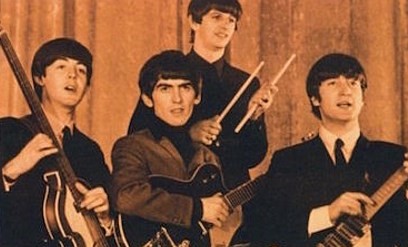 One of many amazing attributes that The Beatles possessed was their innate ability to interpret a song that they had a passion for with exuberance and flair in order to create a distinctively unique cover version. Their second British album “With The Beatles” contains six such examples. Arguably, this album displays the group's peak at these interpretations. You can tell from listening to these tracks, even many decades later, that they thoroughly enjoyed recording them, possibly even more than the original songs they recorded for this album. One of many amazing attributes that The Beatles possessed was their innate ability to interpret a song that they had a passion for with exuberance and flair in order to create a distinctively unique cover version. Their second British album “With The Beatles” contains six such examples. Arguably, this album displays the group's peak at these interpretations. You can tell from listening to these tracks, even many decades later, that they thoroughly enjoyed recording them, possibly even more than the original songs they recorded for this album.
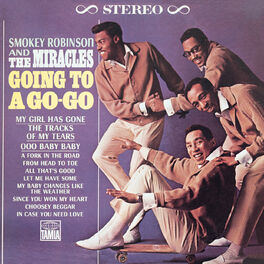 Of all the cover songs they recorded for "With The Beatles," “You Really Got A Hold On Me” held a special place in their hearts. It had recently been recorded by its writer William “Smokey” Robinson and his group The Miracles and first hit the charts only earlier that year, debuting on the Billboard singles chart on January 12, 1963. A little over six months later, The Beatles chose to deliver their own interpretation of this song for their second album. In fact, this was the very first song they chose to record for their new album. Of all the cover songs they recorded for "With The Beatles," “You Really Got A Hold On Me” held a special place in their hearts. It had recently been recorded by its writer William “Smokey” Robinson and his group The Miracles and first hit the charts only earlier that year, debuting on the Billboard singles chart on January 12, 1963. A little over six months later, The Beatles chose to deliver their own interpretation of this song for their second album. In fact, this was the very first song they chose to record for their new album.
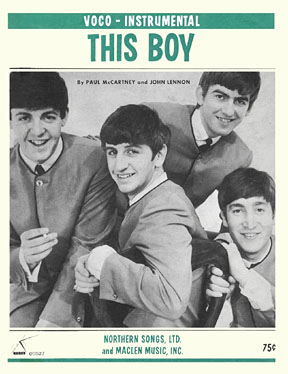 The Beatles had a special attachment to the music of The Miracles. Many influences have be cited by many authors as to which recording artists have contributed to the sound and style of The Beatles music, but Smokey Robinson and The Miracles should definitely be on the top of that list, at least during the latter half of 1963. A sizable amount of the band's original compositions appearing during this period were said, by John and Paul themselves, to have been inspired by Smokey Robinson, including “This Boy,” “All I’ve Got To Do” and “Not A Second Time.” The Beatles had a special attachment to the music of The Miracles. Many influences have be cited by many authors as to which recording artists have contributed to the sound and style of The Beatles music, but Smokey Robinson and The Miracles should definitely be on the top of that list, at least during the latter half of 1963. A sizable amount of the band's original compositions appearing during this period were said, by John and Paul themselves, to have been inspired by Smokey Robinson, including “This Boy,” “All I’ve Got To Do” and “Not A Second Time.”
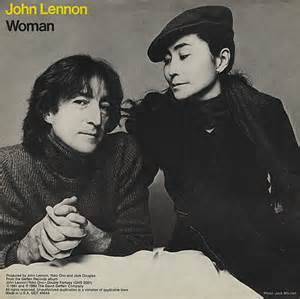 In retrospect, an event occurring during the recording of Lennon’s “Double Fantasy” album in 1980 sheds some light on the impact The Miracles music had on the career of The Beatles. While recording the vocal track for the hit song “Woman,” Yoko commented that John sounded like a Beatle. "Actually I’m supposed to be Smokey Robinson at the moment, my dear," her husband John corrected her, adding, "because The Beatles were always supposing that they were Smokey Robinson." In retrospect, an event occurring during the recording of Lennon’s “Double Fantasy” album in 1980 sheds some light on the impact The Miracles music had on the career of The Beatles. While recording the vocal track for the hit song “Woman,” Yoko commented that John sounded like a Beatle. "Actually I’m supposed to be Smokey Robinson at the moment, my dear," her husband John corrected her, adding, "because The Beatles were always supposing that they were Smokey Robinson."
 The admiration The Beatles held for Smokey Robinson could also be witnessed at the 2009 Grammy Awards. When Smokey Robinson appeared on stage to honor fellow Motown artists The Four Tops, McCartney, who was an audience attendee, jumped to his feet and admiringly joined in giving him a thunderous standing ovation, as if to honor the man who was one of the greatest influences of his career. The admiration The Beatles held for Smokey Robinson could also be witnessed at the 2009 Grammy Awards. When Smokey Robinson appeared on stage to honor fellow Motown artists The Four Tops, McCartney, who was an audience attendee, jumped to his feet and admiringly joined in giving him a thunderous standing ovation, as if to honor the man who was one of the greatest influences of his career.
Songwriting History
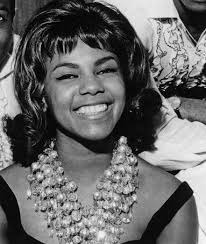 William “Smokey” Robinson was born on February 19, 1940 in Detroit, Michigan. An uncle gave him the nickname “Smokey Joe” (later shortened to “Smokey”) at a young age because of his love for cowboy movies. In 1955, Smokey Robinson formed a vocal group called “The Five Chimes” and then, with some personnel changes, it became “The Matadors.” Among the new members of this group was Claudette Rogers who in 1959 became Smokey Robinson's wife. William “Smokey” Robinson was born on February 19, 1940 in Detroit, Michigan. An uncle gave him the nickname “Smokey Joe” (later shortened to “Smokey”) at a young age because of his love for cowboy movies. In 1955, Smokey Robinson formed a vocal group called “The Five Chimes” and then, with some personnel changes, it became “The Matadors.” Among the new members of this group was Claudette Rogers who in 1959 became Smokey Robinson's wife.
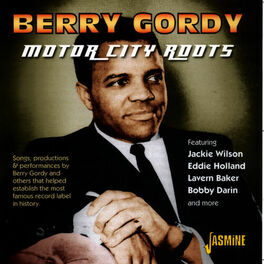 As the lead vocalist of “The Matadors,” Smokey Robinson began touring local hot spots in Detroit and, in 1958 under their brand new name “The Miracles,” released records on End Records and Chess Records through his connection with his new found friend Berry Gordy. When Smokey Robinson suggested to Berry Gordy the idea of forming his own record label, “The Miracles” were among the first acts signed to his Tamla label (which soon evolved into Motown Records). As the lead vocalist of “The Matadors,” Smokey Robinson began touring local hot spots in Detroit and, in 1958 under their brand new name “The Miracles,” released records on End Records and Chess Records through his connection with his new found friend Berry Gordy. When Smokey Robinson suggested to Berry Gordy the idea of forming his own record label, “The Miracles” were among the first acts signed to his Tamla label (which soon evolved into Motown Records).
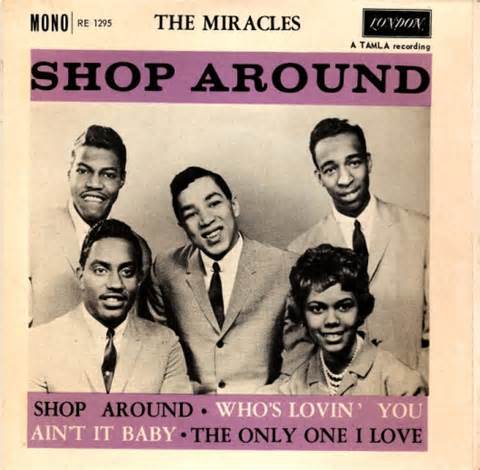 Smokey Robinson’s close friendship with Berry Gordy led to his being appointed vice-president of Motown Records in 1961, as well as working as a successful artist, producer and songwriter for the label. The Miracles single “Shop Around” became the first #1 single on the Billboard R&B charts for Motown (#2 on the Billboard Hot 100). The groups' career with Smokey Robinson as lead singer/songwriter on Motown’s “Tamla” label spanned twelve years and a total of 27 Top 40 hits on the Billboard Hot 100, six of which reached the Top Ten, including “Mickey’s Monkey” (#8), “I Second That Emotion” (#4) and “Baby, Baby Don’t Cry” (#8). Their 1970 release “The Tears Of A Clown” was the only #1 of Smokey Robinson’s career on the Billboard Hot 100, solo or otherwise. Smokey Robinson’s close friendship with Berry Gordy led to his being appointed vice-president of Motown Records in 1961, as well as working as a successful artist, producer and songwriter for the label. The Miracles single “Shop Around” became the first #1 single on the Billboard R&B charts for Motown (#2 on the Billboard Hot 100). The groups' career with Smokey Robinson as lead singer/songwriter on Motown’s “Tamla” label spanned twelve years and a total of 27 Top 40 hits on the Billboard Hot 100, six of which reached the Top Ten, including “Mickey’s Monkey” (#8), “I Second That Emotion” (#4) and “Baby, Baby Don’t Cry” (#8). Their 1970 release “The Tears Of A Clown” was the only #1 of Smokey Robinson’s career on the Billboard Hot 100, solo or otherwise.
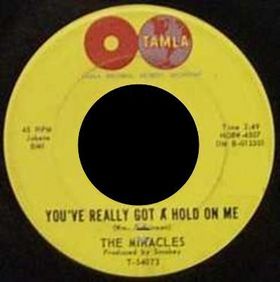 The Miracles' fourth Top 40 pop hit was their self-penned classic “You’ve Really Got A Hold On Me,” which was originally intended as a b-side to their single "Happy Landing." Once focus was changed to the other side of the record, "You've Really Got A Hold On Me" reached #1 on the Billboard R&B Singles chart and #8 on the Billboard Hot 100. This song was composed by Smokey Robinson in a hotel room in 1962 while in New York on business for Motown Records, his inspiration being Sam Cooke's hit "Bring It On Home To Me," which he heard on the radio during this trip. "You've Really Got A Hold On Me" became the group's second million-selling single, the first being "Shop Around." The single was released in Britain on the Oriole label but failed to make the UK charts, although it did get the attention of John Lennon who loved it enough to scarf it up for The Beatles to work up a powerful rendition. The Miracles' fourth Top 40 pop hit was their self-penned classic “You’ve Really Got A Hold On Me,” which was originally intended as a b-side to their single "Happy Landing." Once focus was changed to the other side of the record, "You've Really Got A Hold On Me" reached #1 on the Billboard R&B Singles chart and #8 on the Billboard Hot 100. This song was composed by Smokey Robinson in a hotel room in 1962 while in New York on business for Motown Records, his inspiration being Sam Cooke's hit "Bring It On Home To Me," which he heard on the radio during this trip. "You've Really Got A Hold On Me" became the group's second million-selling single, the first being "Shop Around." The single was released in Britain on the Oriole label but failed to make the UK charts, although it did get the attention of John Lennon who loved it enough to scarf it up for The Beatles to work up a powerful rendition.
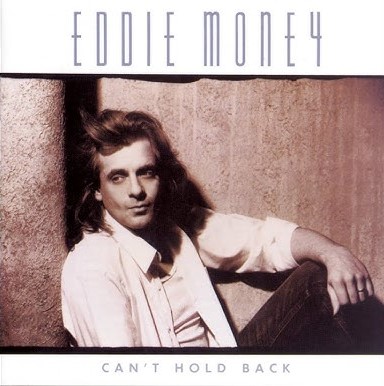 "You've Really Got A Hold On Me" has been covered by many other artists, including Eddie Money (#72 in 1978), Mickey Gilley (#2 on the US Billboard Country chart in 1983) and Greg Allman & Cher (1977), and was later a Grammy Hall Of Fame award winner in 1998. The song has also been selected as one of the Rock And Roll Hall Of Fame's "500 Songs That Shaped Rock And Roll." It's also been included in many motion pictures, such as “Nothing But A Man” (1964), "More American Graffiti" (1979), "Mermaids" (1990) and “Striptease” (1996). Smokey Robinson himself did a rendition of the song on Sesame Street, highlighting how the letter “U” had such a hold on him. "You've Really Got A Hold On Me" has been covered by many other artists, including Eddie Money (#72 in 1978), Mickey Gilley (#2 on the US Billboard Country chart in 1983) and Greg Allman & Cher (1977), and was later a Grammy Hall Of Fame award winner in 1998. The song has also been selected as one of the Rock And Roll Hall Of Fame's "500 Songs That Shaped Rock And Roll." It's also been included in many motion pictures, such as “Nothing But A Man” (1964), "More American Graffiti" (1979), "Mermaids" (1990) and “Striptease” (1996). Smokey Robinson himself did a rendition of the song on Sesame Street, highlighting how the letter “U” had such a hold on him.
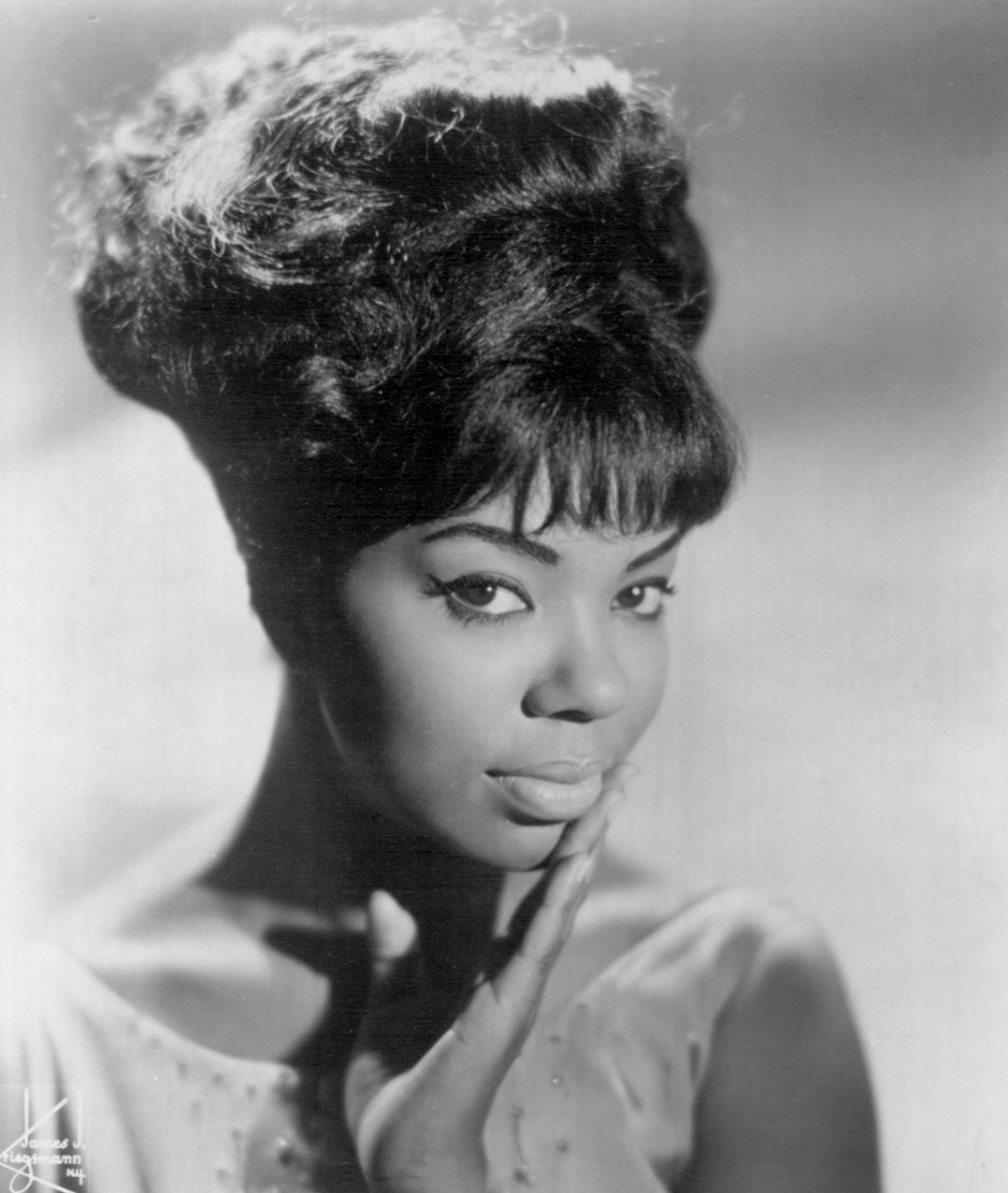 Smokey Robinson’s career as songwriter at Motown included a vast array of hits for other artists, including both “My Guy” by Mary Wells and “My Girl” by The Temptations. Other noteworthy examples are “The Way You Do The Things You Do” and “Get Ready” by The Temptations, "Don't Mess With Bill" by The Marvelettes, “Ain’t That Peculiar” and “I’ll Be Doggone” by Marvin Gaye. His immense contribution to the Motown label as both artist and songwriter has earned him the well deserved title “The King Of Motown.” Smokey Robinson’s career as songwriter at Motown included a vast array of hits for other artists, including both “My Guy” by Mary Wells and “My Girl” by The Temptations. Other noteworthy examples are “The Way You Do The Things You Do” and “Get Ready” by The Temptations, "Don't Mess With Bill" by The Marvelettes, “Ain’t That Peculiar” and “I’ll Be Doggone” by Marvin Gaye. His immense contribution to the Motown label as both artist and songwriter has earned him the well deserved title “The King Of Motown.”
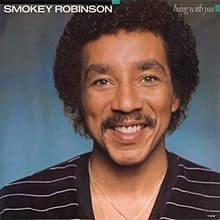 Smokey Robinson left The Miracles in 1972 to pursue a solo career, his final concert appearance with the group being on July 16th, 1972. While continuing his duties as vice-president of Motown, he scored three Billboard Top 40 hits in 1975 before returning to the Top 5 with “Cruisin’” (#4 in 1979) and the million selling “Being With You” (#2 in 1981). After a very well documented cocaine addiction and divorce from his wife Claudette, his career slowed, only to re-emerge in 1987 with two additional Billboard Top 10 hits, the Grammy Award winning “Just To See Her” (#8) and finally “One Heartbeat” (#10). Smokey Robinson left The Miracles in 1972 to pursue a solo career, his final concert appearance with the group being on July 16th, 1972. While continuing his duties as vice-president of Motown, he scored three Billboard Top 40 hits in 1975 before returning to the Top 5 with “Cruisin’” (#4 in 1979) and the million selling “Being With You” (#2 in 1981). After a very well documented cocaine addiction and divorce from his wife Claudette, his career slowed, only to re-emerge in 1987 with two additional Billboard Top 10 hits, the Grammy Award winning “Just To See Her” (#8) and finally “One Heartbeat” (#10).
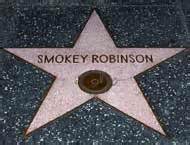 One cannot overestimate the influence he has had on the music industry. Among his honors, he has received a star on the “Hollywood Walk Of Fame.” Bob Dylan has once referred to Smokey Robinson as “America’s greatest living poet.” The '80s pop group ABC scored a US #5 hit with a tribute song “When Smokey Sings,” which charted in the US Billboard Top Ten alongside Smokey Robinson’s “One Heartbeat” single in 1987. One cannot overestimate the influence he has had on the music industry. Among his honors, he has received a star on the “Hollywood Walk Of Fame.” Bob Dylan has once referred to Smokey Robinson as “America’s greatest living poet.” The '80s pop group ABC scored a US #5 hit with a tribute song “When Smokey Sings,” which charted in the US Billboard Top Ten alongside Smokey Robinson’s “One Heartbeat” single in 1987.
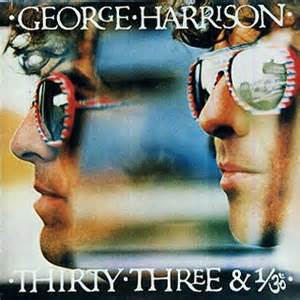 His influence on The Beatles has been noteworthy. The Miracles’ song “I’ve Been Good To You” has been revealed by John Lennon to be one of his all-time favorite songs, which lyrically influenced his 1968 song “Sexy Sadie.” He also reportedly used lyrical ideas from Smokey Robinson’s song “You Can Depend On Me” in writing his 1963 ballad “All I’ve Got To Do.” Even "I Am The Walrus" contains the "I'm crying" lyric taken from Smokey Robinson's "Ooh Baby Baby." George Harrison recorded the tribute song “Pure Smokey” on his 1976 album “Thirty-Three And 1/3," as well as including the lyric "and you've really got a hold on me" on his 1987 hit "When We Was Fab.” All in all, the delicately fragile vocal style of the “King Of Motown” has had and still has a tremendous impact on the music industry. His influence on The Beatles has been noteworthy. The Miracles’ song “I’ve Been Good To You” has been revealed by John Lennon to be one of his all-time favorite songs, which lyrically influenced his 1968 song “Sexy Sadie.” He also reportedly used lyrical ideas from Smokey Robinson’s song “You Can Depend On Me” in writing his 1963 ballad “All I’ve Got To Do.” Even "I Am The Walrus" contains the "I'm crying" lyric taken from Smokey Robinson's "Ooh Baby Baby." George Harrison recorded the tribute song “Pure Smokey” on his 1976 album “Thirty-Three And 1/3," as well as including the lyric "and you've really got a hold on me" on his 1987 hit "When We Was Fab.” All in all, the delicately fragile vocal style of the “King Of Motown” has had and still has a tremendous impact on the music industry.
Recording History
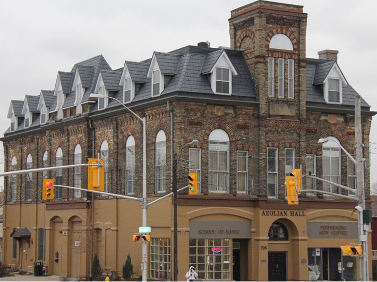 The first time The Beatles brought "You Really Got A Hold On Me" into an actual recording studio was specifically for BBC radio, which was on May 24th, 1963 in Studio Two of Aeolian Hall in London between 2 and 6 pm for the first edition of a new radio show entitled “Pop Goes The Beatles.” This recording was produced by Terry Henebery and was broadcast on June 4th, 1963 between 5 and 5:29 pm. They recorded the song again for the BBC on July 16th, 1963 at BBC Paris Studio in London between 6 and 8:30 pm for the ninth edition of “Pop Goes The Beatles," which was produced by Terry Henebery and broadcast on August 13th, 1963 between 5 and 5:29 pm. The first time The Beatles brought "You Really Got A Hold On Me" into an actual recording studio was specifically for BBC radio, which was on May 24th, 1963 in Studio Two of Aeolian Hall in London between 2 and 6 pm for the first edition of a new radio show entitled “Pop Goes The Beatles.” This recording was produced by Terry Henebery and was broadcast on June 4th, 1963 between 5 and 5:29 pm. They recorded the song again for the BBC on July 16th, 1963 at BBC Paris Studio in London between 6 and 8:30 pm for the ninth edition of “Pop Goes The Beatles," which was produced by Terry Henebery and broadcast on August 13th, 1963 between 5 and 5:29 pm.
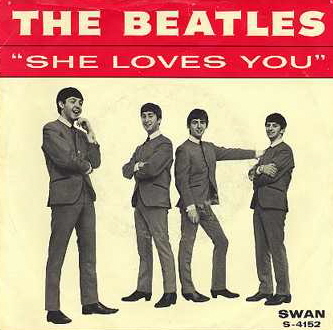 Just 17 days after recording what was to then be their next single “She Loves You,” manager Brian Epstein had them back in EMI Studio Two recording their next album. Brian Epstein had just negotiated a one-and-a-half cent per album payment to Berry Gordy for use of the song on a Beatles album, a reduction from the standard two cent payment. Having probably been in the mood for recording cover versions (since they had just recorded thirty-six of them for broadcast on BBC radio between the dates of July 2nd and 16th, 1963), The Beatles began proceedings for their second British album on July 18th, 1963, by recording this recent John Lennon favorite. Incidentally, their first British album "Please Please Me" was still in the #1 position on the UK album charts, four months after its release, when The Beatles began recording their second British album on this day. Just 17 days after recording what was to then be their next single “She Loves You,” manager Brian Epstein had them back in EMI Studio Two recording their next album. Brian Epstein had just negotiated a one-and-a-half cent per album payment to Berry Gordy for use of the song on a Beatles album, a reduction from the standard two cent payment. Having probably been in the mood for recording cover versions (since they had just recorded thirty-six of them for broadcast on BBC radio between the dates of July 2nd and 16th, 1963), The Beatles began proceedings for their second British album on July 18th, 1963, by recording this recent John Lennon favorite. Incidentally, their first British album "Please Please Me" was still in the #1 position on the UK album charts, four months after its release, when The Beatles began recording their second British album on this day.
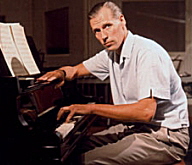 Running from 7 to 10:45 pm, the session began with “You Really Got A Hold On Me” (inadvertently changing the title from the original “You’ve”). Seven live takes of the song were first recorded, featuring all four Beatles playing their usual instruments and singing without overdubs, accompanied by producer George Martin on piano. Only four of these performances were complete (three of them being false starts), "take seven" being the keeper. Running from 7 to 10:45 pm, the session began with “You Really Got A Hold On Me” (inadvertently changing the title from the original “You’ve”). Seven live takes of the song were first recorded, featuring all four Beatles playing their usual instruments and singing without overdubs, accompanied by producer George Martin on piano. Only four of these performances were complete (three of them being false starts), "take seven" being the keeper.
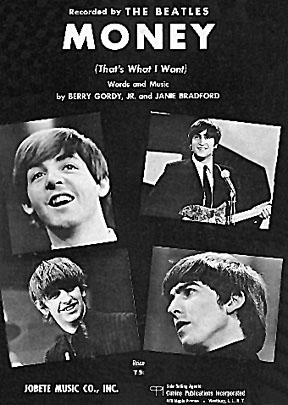 The Beatles immediately recorded four edit pieces for the song, concentrating on the word “baby” appearing in the final verse, and on the ending riffs of the song. "Take 10" finalized the ending riff, while "take 11" perfected the word “baby.” This completed the recording of the finished version of the song as we know it. Completed by approximately 8 pm, it took an estimated hour to fully record this amazing rendition of an amazing song. The remainder of the day entailed recording the bulk of “Money (That's What I Want),” the entire recording of “Devil In Her Heart,” and an early attempt at “Till There Was You.” The Beatles immediately recorded four edit pieces for the song, concentrating on the word “baby” appearing in the final verse, and on the ending riffs of the song. "Take 10" finalized the ending riff, while "take 11" perfected the word “baby.” This completed the recording of the finished version of the song as we know it. Completed by approximately 8 pm, it took an estimated hour to fully record this amazing rendition of an amazing song. The remainder of the day entailed recording the bulk of “Money (That's What I Want),” the entire recording of “Devil In Her Heart,” and an early attempt at “Till There Was You.”
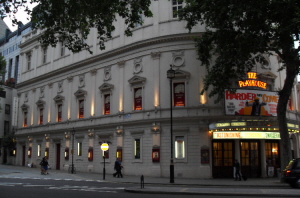 Their next BBC recording of the song was on July 30th, 1963 at The Playhouse Theatre in London between 2:30 and 4:30 pm for the show “Saturday Club,” which was produced by Jimmy Grant and Bernie Andrews and broadcast on August 24th between 10 am and 12 noon. Their next BBC recording of the song was on July 30th, 1963 at The Playhouse Theatre in London between 2:30 and 4:30 pm for the show “Saturday Club,” which was produced by Jimmy Grant and Bernie Andrews and broadcast on August 24th between 10 am and 12 noon.
 August 21st, 1963 was the date chosen by George Martin to edit "take seven" of the rhythm track with "take 10" of the ending riff and "take 11" of the "baby" vocals in the last verse to create the final master of "You Really Got A Hold On Me." The mono mix was also created on this day, this appearing on the British "With The Beatles" album, the other completed songs recorded for the album thus far also being created on this day. This session took place in the control room of EMI Studio Three and was attended only by George Martin and engineers Norman Smith and Geoff Emerick. August 21st, 1963 was the date chosen by George Martin to edit "take seven" of the rhythm track with "take 10" of the ending riff and "take 11" of the "baby" vocals in the last verse to create the final master of "You Really Got A Hold On Me." The mono mix was also created on this day, this appearing on the British "With The Beatles" album, the other completed songs recorded for the album thus far also being created on this day. This session took place in the control room of EMI Studio Three and was attended only by George Martin and engineers Norman Smith and Geoff Emerick.
The final BBC version of the song was recorded on September 9th, 1963 in Studio Two of Aeolian Hall in London between 5 and 7:30 pm for the fourteenth edition of “Pop Goes The Beatles,” which was produced by Ian Grant and broadcast on September 17th of that year.
 This is not to say that The Beatles were done with the song at this point. Being that they were finally granted the use of four-track recording equipment on October 17th, 1963, John Lennon insisted that they take another stab at the song on this date. Geoff Emerick, in his book "Here, There And Everywhere," explains, “Perhaps, in his naivete, (John) thought that simply recording it on four-track instead of two-track would somehow make it sound better, but after one whack at it, the idea was abandoned.” George Martin at that point insisted that they move on, explaining that the recording they made on July 18th, 1963, was adequate. Lennon then exclaimed, “All right, George, we give up,” and then added, "but you'd better come on down here and have a listen to our next #1 record," thus introducing their next single, “I Want To Hold Your Hand,” which was recorded next. This is not to say that The Beatles were done with the song at this point. Being that they were finally granted the use of four-track recording equipment on October 17th, 1963, John Lennon insisted that they take another stab at the song on this date. Geoff Emerick, in his book "Here, There And Everywhere," explains, “Perhaps, in his naivete, (John) thought that simply recording it on four-track instead of two-track would somehow make it sound better, but after one whack at it, the idea was abandoned.” George Martin at that point insisted that they move on, explaining that the recording they made on July 18th, 1963, was adequate. Lennon then exclaimed, “All right, George, we give up,” and then added, "but you'd better come on down here and have a listen to our next #1 record," thus introducing their next single, “I Want To Hold Your Hand,” which was recorded next.
 Their stereo mix of "You Really Got A Hold On Me," along with the rest of the album, was hurriedly done on October 29th, 1963, by George Martin, Norman Smith and Geoff Emerick as well as the mysterious engineer with the initials B.T. This stereo mix appeared on the US "The Beatles' Second Album" as both the stereo and mono mix, as detailed below. Their stereo mix of "You Really Got A Hold On Me," along with the rest of the album, was hurriedly done on October 29th, 1963, by George Martin, Norman Smith and Geoff Emerick as well as the mysterious engineer with the initials B.T. This stereo mix appeared on the US "The Beatles' Second Album" as both the stereo and mono mix, as detailed below.
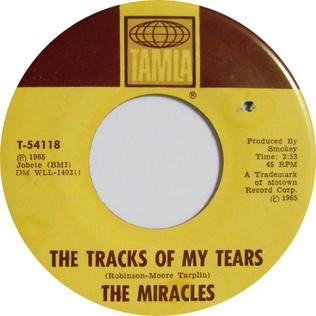 The Beatles did record the song again in the studio, but this time it was in their newly formed Apple Studios on January 26th, 1969, during sessions for the “Get Back” project (released as “Let It Be”). The recent purchase of Smokey Robinson records by George Harrison inspired The Beatles (with Billy Preston) to go through two takes of “You Really Got A Hold On Me” as well as the more recent Miracles hit “The Tracks Of My Tears.” The first attempt was thought interesting enough to be preserved on film and released in the “Let It Be” movie. Although producer / engineer Glyn Johns deemed their rendition of the song worthy enough to prepare a mix in March of 1969 for intended release, it was eventually dropped from the running order once the "Let It Be" album was prepared for release in 1970. The Beatles did record the song again in the studio, but this time it was in their newly formed Apple Studios on January 26th, 1969, during sessions for the “Get Back” project (released as “Let It Be”). The recent purchase of Smokey Robinson records by George Harrison inspired The Beatles (with Billy Preston) to go through two takes of “You Really Got A Hold On Me” as well as the more recent Miracles hit “The Tracks Of My Tears.” The first attempt was thought interesting enough to be preserved on film and released in the “Let It Be” movie. Although producer / engineer Glyn Johns deemed their rendition of the song worthy enough to prepare a mix in March of 1969 for intended release, it was eventually dropped from the running order once the "Let It Be" album was prepared for release in 1970.
 Sometime in 2023, Giles Martin was given the task of creating a "demix remix" of "You Really Got A Hold On Me" for inclusion on the 50th Anniversary edition of the compilation album "The Beatles / 1962 - 1966" (aka "The Red Album"). With Peter Jackson's AI technology at his disposal, Giles Martin was able to work with this "new machine-learning techology" so that "individual elements that were put to tape...and were therefore impossible to separate" could now be "untangled, allowing Giles (Martin) to put the original recordings back together with even greater clarity and impact," as stated by John Harris in the liner notes of the above mentioned album. The "clarity and impact" is especially witnessed here on "You Really Got A Hold On Me," which is arguably the best presentation of the song to date. Sometime in 2023, Giles Martin was given the task of creating a "demix remix" of "You Really Got A Hold On Me" for inclusion on the 50th Anniversary edition of the compilation album "The Beatles / 1962 - 1966" (aka "The Red Album"). With Peter Jackson's AI technology at his disposal, Giles Martin was able to work with this "new machine-learning techology" so that "individual elements that were put to tape...and were therefore impossible to separate" could now be "untangled, allowing Giles (Martin) to put the original recordings back together with even greater clarity and impact," as stated by John Harris in the liner notes of the above mentioned album. The "clarity and impact" is especially witnessed here on "You Really Got A Hold On Me," which is arguably the best presentation of the song to date.
Song Structure and Style
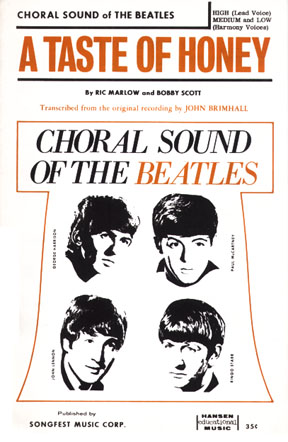 The structure of “You Really Got A Hold On Me” is somewhat complex and left to various interpretations. This thumping ballad in 6/8 time appears to follow the same basic pattern as a long-standing song in their repertoire, “A Taste Of Honey,” which would comprise a 'verse/ verse/ refrain' formula, but with added characteristics. The structure of “You Really Got A Hold On Me” is somewhat complex and left to various interpretations. This thumping ballad in 6/8 time appears to follow the same basic pattern as a long-standing song in their repertoire, “A Taste Of Honey,” which would comprise a 'verse/ verse/ refrain' formula, but with added characteristics.
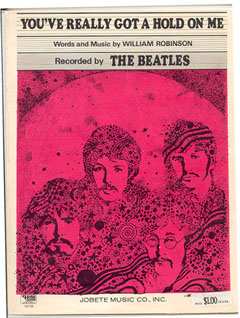 After this initial pattern, a bridge then appears (which incorporates the lyric “tighter”), before delving back into another verse and refrain. Then we move into a unique conclusion, which sounds similar to the final eight measures of the verse but then concludes with an instrumental coda that finishes off the song. This conclusion dispenses of the fade-out ending of the original Miracles' rendition in favor of what works best for concert performances. After all is said and done, we see a 'verse/ verse/ refrain/ bridge/ verse/ refrain/ conclusion' pattern, translatable as aabcabd. After this initial pattern, a bridge then appears (which incorporates the lyric “tighter”), before delving back into another verse and refrain. Then we move into a unique conclusion, which sounds similar to the final eight measures of the verse but then concludes with an instrumental coda that finishes off the song. This conclusion dispenses of the fade-out ending of the original Miracles' rendition in favor of what works best for concert performances. After all is said and done, we see a 'verse/ verse/ refrain/ bridge/ verse/ refrain/ conclusion' pattern, translatable as aabcabd.
 The recording does start, however, with a similar eight-measure introduction as appearing on the original version, this creating a suitable anticipatory feeling and gets the ball rolling. This lengthy 22-measure verse, which suitably concludes with the song's title repeated four times, segues into another verse of equal length and style, differing only by a new set of lyrics. The recording does start, however, with a similar eight-measure introduction as appearing on the original version, this creating a suitable anticipatory feeling and gets the ball rolling. This lengthy 22-measure verse, which suitably concludes with the song's title repeated four times, segues into another verse of equal length and style, differing only by a new set of lyrics.
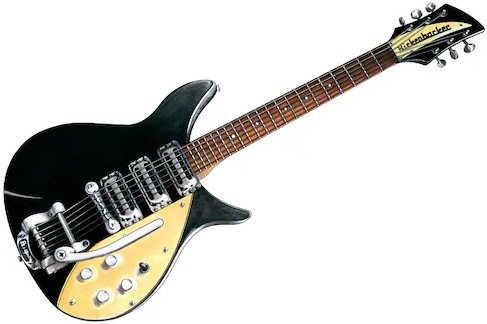 We then go into the eight-measure refrain which is the true attention-getter of the song, although the title does not appear in its lyrics. Instead, we hear The Beatles' voices repeat the words “hold me” four times in the final four measures while the band accentuates each time with a thunderous "break" on each one-beat. The last of these four times puts the song in suspended animation, holding in the air without the time clock going, only to resume when the introduction reappears to set the song in motion again. This unique characteristic, as copied from the original, celebrates the brilliance of the song’s writer and arranger. We then go into the eight-measure refrain which is the true attention-getter of the song, although the title does not appear in its lyrics. Instead, we hear The Beatles' voices repeat the words “hold me” four times in the final four measures while the band accentuates each time with a thunderous "break" on each one-beat. The last of these four times puts the song in suspended animation, holding in the air without the time clock going, only to resume when the introduction reappears to set the song in motion again. This unique characteristic, as copied from the original, celebrates the brilliance of the song’s writer and arranger.
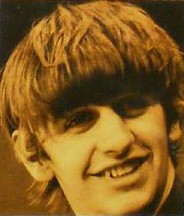 We then delve next into the eight-measure bridge which showcases some fancy drum-work from Ringo during the fourth and eighth measure while the words “tighter” are heard. This creates a perfect segue back into a third verse, which is nearly identical to the first two other than different lyrics. At the end of this verse we hear the excited “baby” overdub the group insisted on adding in order to complete the recording of the song. We then delve next into the eight-measure bridge which showcases some fancy drum-work from Ringo during the fourth and eighth measure while the words “tighter” are heard. This creates a perfect segue back into a third verse, which is nearly identical to the first two other than different lyrics. At the end of this verse we hear the excited “baby” overdub the group insisted on adding in order to complete the recording of the song.
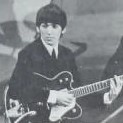 This takes us to the final refrain to round off the structure of this rendition, differing from the first only by the words “please” and “squeeze” heard in the first two dramatic breaks of the final four measures. After the repetition of the "suspended animation" aspect of the refrain, we finish off with a seeming repeat of the final eight measures of the verse, only it differs in the placement of the chord changes within the sentence structure of the title of the song as it is repeated four times. We then conclude the proceedings with two measures arranged specifically by The Beatles to create a performance ending to the song. These last two measures accentuate each beat of the time signature in triplet notes, which are repeated four times before ending with a breathtaking final chord and cymbal crash. Top-notch! This takes us to the final refrain to round off the structure of this rendition, differing from the first only by the words “please” and “squeeze” heard in the first two dramatic breaks of the final four measures. After the repetition of the "suspended animation" aspect of the refrain, we finish off with a seeming repeat of the final eight measures of the verse, only it differs in the placement of the chord changes within the sentence structure of the title of the song as it is repeated four times. We then conclude the proceedings with two measures arranged specifically by The Beatles to create a performance ending to the song. These last two measures accentuate each beat of the time signature in triplet notes, which are repeated four times before ending with a breathtaking final chord and cymbal crash. Top-notch!
 Performance wise, this is a prime example of the synergy the band created as all four of them performed at the top of their game, one member not shining above the others. John and George created the vocal harmonic force that drives the song throughout. George, as it has been said about his early Beatle years, may have struggled with a limited vocal range, but sheer enthusiasm and devotion to The Miracles’ original version wins the day. John's portrayal of reluctant infatuation created through strength and intensely raw sincerity makes up for the more subtle nuance of Smokey Robinson's brilliant original performance. Vocal strength alone wins out on this song, although the musical performance brings it all home. Performance wise, this is a prime example of the synergy the band created as all four of them performed at the top of their game, one member not shining above the others. John and George created the vocal harmonic force that drives the song throughout. George, as it has been said about his early Beatle years, may have struggled with a limited vocal range, but sheer enthusiasm and devotion to The Miracles’ original version wins the day. John's portrayal of reluctant infatuation created through strength and intensely raw sincerity makes up for the more subtle nuance of Smokey Robinson's brilliant original performance. Vocal strength alone wins out on this song, although the musical performance brings it all home.
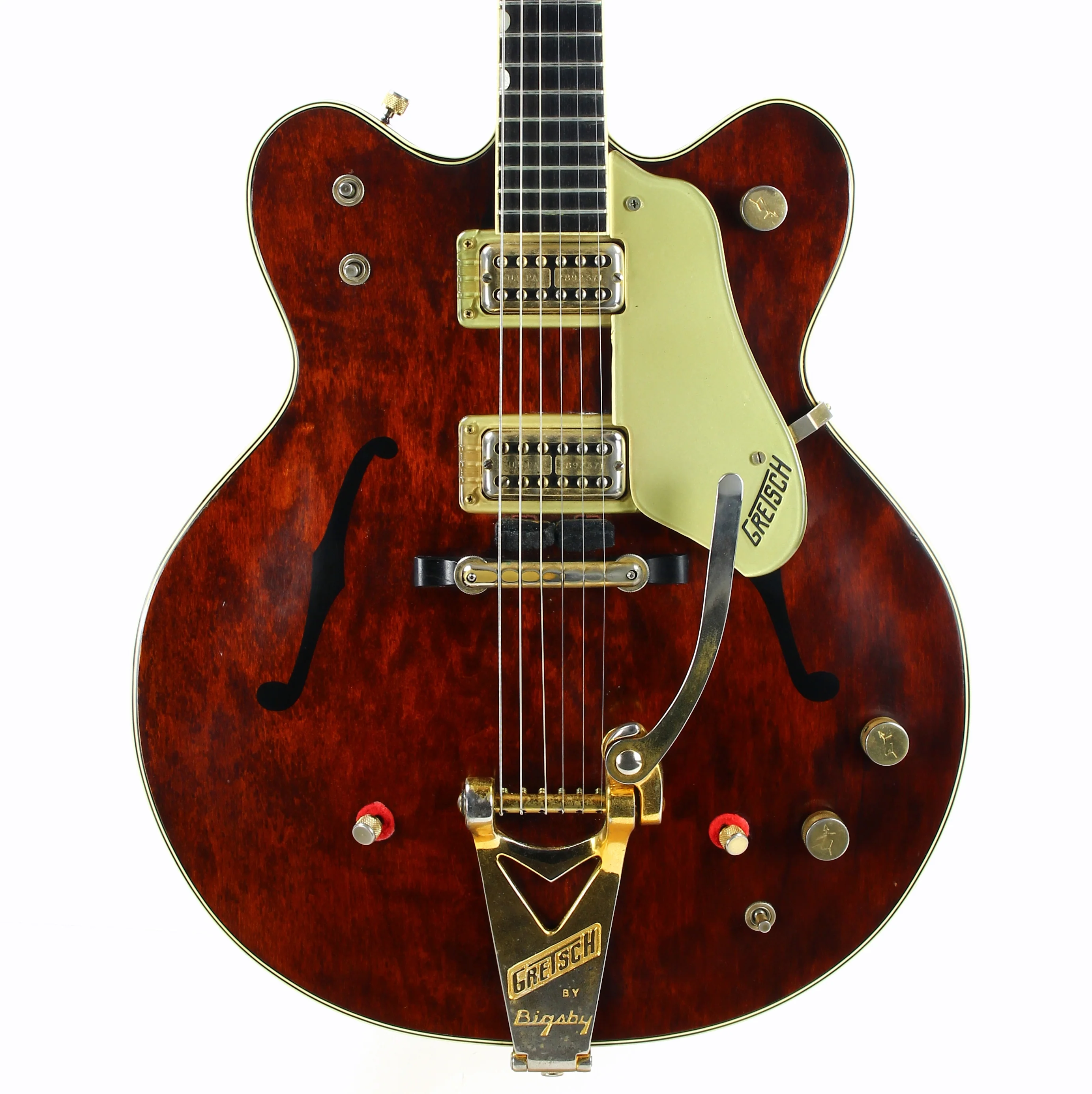 The combination of George Harrison’s lead guitar work and George Martin’s piano vamping creates an amazing blend, especially noteworthy during the repeated intro riff heard periodically in the song. Lennon’s rhythm guitar work is painstakingly accurate, as is Ringo’s excellent reading of the original. Uniquely, McCartney doesn’t pine for the spotlight in this song; instead he lays back, adds periodic harmony vocals and plays rudimentary but accurate bass lines which appear low in the mix. The combination of George Harrison’s lead guitar work and George Martin’s piano vamping creates an amazing blend, especially noteworthy during the repeated intro riff heard periodically in the song. Lennon’s rhythm guitar work is painstakingly accurate, as is Ringo’s excellent reading of the original. Uniquely, McCartney doesn’t pine for the spotlight in this song; instead he lays back, adds periodic harmony vocals and plays rudimentary but accurate bass lines which appear low in the mix.
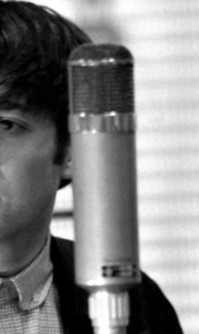 Lyrically, the song is distinctive for its time in portraying the singer’s dependence on a relationship that is obviously not in his best interest. He may have been ‘done wrong’ and ‘treated badly,’ but he can’t help but ‘love her madly’ just the same. In the final verse he even threatens to end the relationship, saying he wants to “split,” but he still acquiesces to his dependence on her. An interesting play on words is heard in the song, not unlike what Lennon and McCartney were prone to put in their own songs, centering on the word “hold.” The power that the female character has on the singer is depicted throughout as the “hold” it has on him, while the refrain explains that all he wants her to do physically is to “hold” him. No doubt, examples like this spurred the Lennon / McCartney songwriting partnership to pursue similar ideas, as we can see throughout the Beatle years. Lyrically, the song is distinctive for its time in portraying the singer’s dependence on a relationship that is obviously not in his best interest. He may have been ‘done wrong’ and ‘treated badly,’ but he can’t help but ‘love her madly’ just the same. In the final verse he even threatens to end the relationship, saying he wants to “split,” but he still acquiesces to his dependence on her. An interesting play on words is heard in the song, not unlike what Lennon and McCartney were prone to put in their own songs, centering on the word “hold.” The power that the female character has on the singer is depicted throughout as the “hold” it has on him, while the refrain explains that all he wants her to do physically is to “hold” him. No doubt, examples like this spurred the Lennon / McCartney songwriting partnership to pursue similar ideas, as we can see throughout the Beatle years.
American Releases
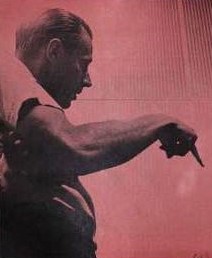 The primary American release of “You Really Got A Hold On Me” came in the form of “The Beatles’ Second Album” on Capitol Records, released on April 10th, 1964. Its position on this album as the third track on side one, in comparison to its British counterpart of third track on side two of the “With The Beatles” album, put deserved prominence on an outstanding song. Incidentally, mono copies of this album contained a "Type B" foldover mix of the song created by Capitol Records that combined both channels of the stereo mix into one instead of the legitimate mono mix originally created by George Martin, not to mention a bit of reverb added for the stereo release. On January 21st, 2014, "The Beatles' Second Album" was released as an individual compact disc for the first time, the originally released mono and stereo mixes being contained on a single CD. The primary American release of “You Really Got A Hold On Me” came in the form of “The Beatles’ Second Album” on Capitol Records, released on April 10th, 1964. Its position on this album as the third track on side one, in comparison to its British counterpart of third track on side two of the “With The Beatles” album, put deserved prominence on an outstanding song. Incidentally, mono copies of this album contained a "Type B" foldover mix of the song created by Capitol Records that combined both channels of the stereo mix into one instead of the legitimate mono mix originally created by George Martin, not to mention a bit of reverb added for the stereo release. On January 21st, 2014, "The Beatles' Second Album" was released as an individual compact disc for the first time, the originally released mono and stereo mixes being contained on a single CD.
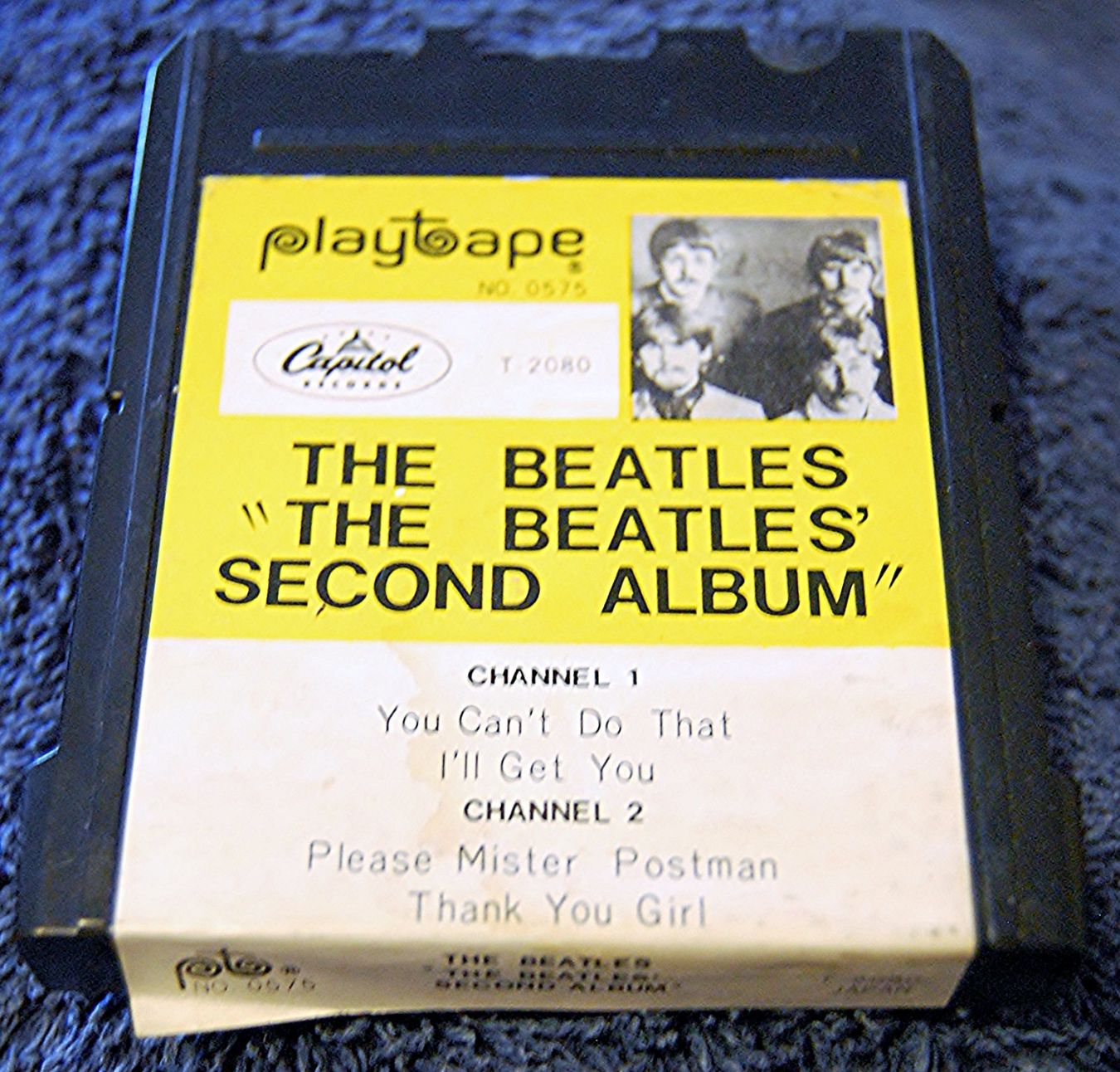 Sometime in 1967, Capitol released Beatles music on a new but short-lived format called "Playtapes." These tape cartridges did not have the capability of including entire albums, so two truncated four-song versions of "The Beatles Second Album" were thus released in this portable format, this song mistakenly titled as "You Really Get A Hold On Me" on one of these versions. These "Playtapes" are difficult to find and highly collectable today. Sometime in 1967, Capitol released Beatles music on a new but short-lived format called "Playtapes." These tape cartridges did not have the capability of including entire albums, so two truncated four-song versions of "The Beatles Second Album" were thus released in this portable format, this song mistakenly titled as "You Really Get A Hold On Me" on one of these versions. These "Playtapes" are difficult to find and highly collectable today.
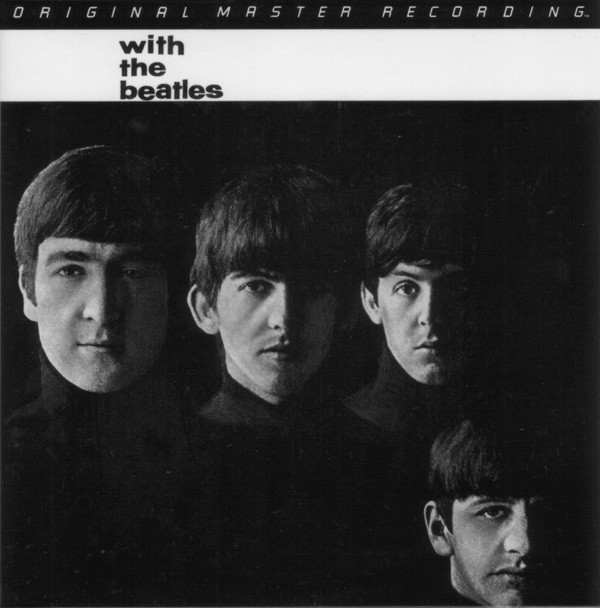 The first time the British "With The Beatles" album was made available in the US was on the "Original Master Recording" vinyl edition released through Mobile Fidelity Sound Lab in January of 1987. This album included "You Really Got A Hold On Me" and was constructed utilizing half-speed mastering technology from the original master tape that was on loan from EMI. This title had a limited production, reportedly because of a damaged metal part that was needed for pressing the vinyl. Therefore, this album is said to be the rarest and most valuable Beatles album in the “Original Master Recording” series. The first time the British "With The Beatles" album was made available in the US was on the "Original Master Recording" vinyl edition released through Mobile Fidelity Sound Lab in January of 1987. This album included "You Really Got A Hold On Me" and was constructed utilizing half-speed mastering technology from the original master tape that was on loan from EMI. This title had a limited production, reportedly because of a damaged metal part that was needed for pressing the vinyl. Therefore, this album is said to be the rarest and most valuable Beatles album in the “Original Master Recording” series.
February 26th, 1987 was the next US release of the song, on the CD "With The Beatles" in mono. A vinyl edition of this album came out on July 21st, 1987. The stereo version was finally remastered and released on September 9th, 2009 on CD, the vinyl edition coming out on November 13th, 2012.
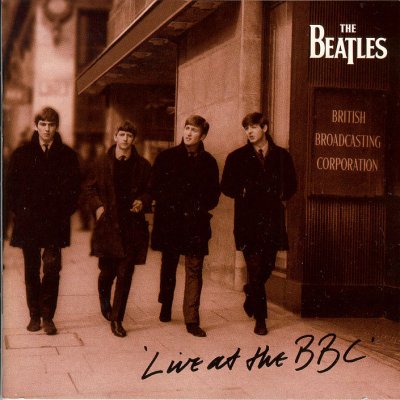 The '90s saw two additional official versions of the song released. “Live At The BBC” appeared on December 6th, 1994, the first album released on the Apple label in nearly two decades. The version appearing on this double disc was the third time the song was recorded for the BBC, which was on July 30th, 1963 for the popular “Saturday Club" show. A remastered and re-packaged version of this album was released on November 11th, 2013. The '90s saw two additional official versions of the song released. “Live At The BBC” appeared on December 6th, 1994, the first album released on the Apple label in nearly two decades. The version appearing on this double disc was the third time the song was recorded for the BBC, which was on July 30th, 1963 for the popular “Saturday Club" show. A remastered and re-packaged version of this album was released on November 11th, 2013.
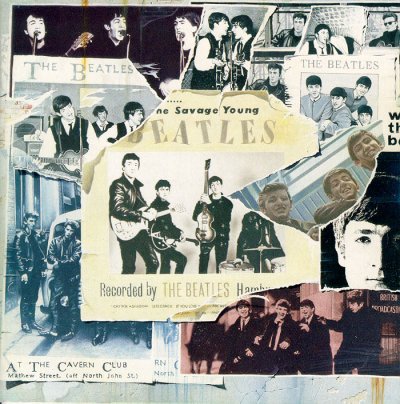 November 21st, 1995 saw the release of “Anthology 1”, which contained a live version of the song as performed on October 24th, 1963 before a studio audience at Karlaplansstudion in Stockholm, Sweden, which was aired on Sveriges Radio on November 11th of that year. November 21st, 1995 saw the release of “Anthology 1”, which contained a live version of the song as performed on October 24th, 1963 before a studio audience at Karlaplansstudion in Stockholm, Sweden, which was aired on Sveriges Radio on November 11th of that year.
Not to be forgotten is the November 15th, 2004 released box set “The Capitol Albums, Vol. 1,” which features the stereo and "Type B" foldover mono versions of the song as originally heard on "The Beatles' Second Album."
 The new CD box set titled “The Beatles In Mono” was released on September 9th, 2009. This all-inclusive box set featured the entire “With The Beatles” album including an excellent remastered mono version of the originally released mono mix of "You Really Got A Hold On Me." The vinyl edition of this box set came out on September 9th, 2014. The new CD box set titled “The Beatles In Mono” was released on September 9th, 2009. This all-inclusive box set featured the entire “With The Beatles” album including an excellent remastered mono version of the originally released mono mix of "You Really Got A Hold On Me." The vinyl edition of this box set came out on September 9th, 2014.
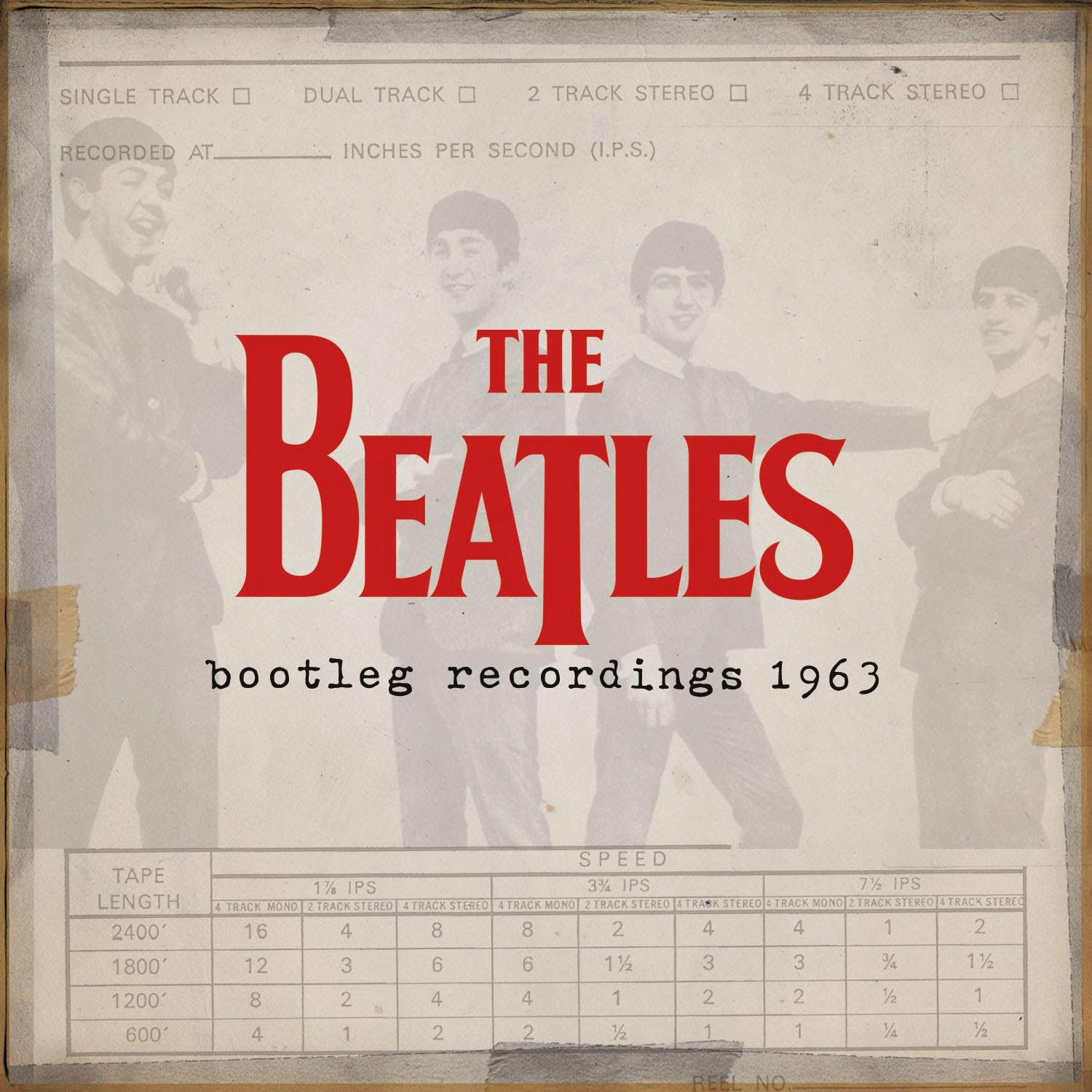 On December 17th, 2013, iTunes released a 59 track compilation album entitled "Bootleg Recordings 1963" only available on their downloading platform. Two BBC renditions of "You Really Got A Hold On Me" are included on this album, which are the June 4th and September 17th, 1963 versions recorded for the "Pop Go The Beatles" programs on those dates. The purpose of new this release was to extend the copyright of these recordings under European Union law from 50 years (which would have expired at the end of 2013) to 70 years (until 2033), this being considered an official release. This compilation album was only available in the US on that date to those in the know for a number of hours for $39.99 in its entirety or to be purchased as individual tracks, but was later made available for purchase as well. On December 17th, 2013, iTunes released a 59 track compilation album entitled "Bootleg Recordings 1963" only available on their downloading platform. Two BBC renditions of "You Really Got A Hold On Me" are included on this album, which are the June 4th and September 17th, 1963 versions recorded for the "Pop Go The Beatles" programs on those dates. The purpose of new this release was to extend the copyright of these recordings under European Union law from 50 years (which would have expired at the end of 2013) to 70 years (until 2033), this being considered an official release. This compilation album was only available in the US on that date to those in the know for a number of hours for $39.99 in its entirety or to be purchased as individual tracks, but was later made available for purchase as well.
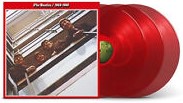 A new 50th Anniversay edition of the compilation album "The Beatles / 1962 - 1966" (aka "The Red Album") was released on November 10th, 2023. This newly expanded set included 12 additional songs for a total of 38 tracks, including the new mix of "You Really Got A Hold On Me" detailed above, and was made available as a double CD and as a triple vinyl release on both black and red vinyl. A new 50th Anniversay edition of the compilation album "The Beatles / 1962 - 1966" (aka "The Red Album") was released on November 10th, 2023. This newly expanded set included 12 additional songs for a total of 38 tracks, including the new mix of "You Really Got A Hold On Me" detailed above, and was made available as a double CD and as a triple vinyl release on both black and red vinyl.
Live Performances
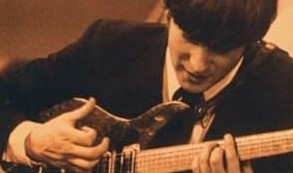 The first verified Beatles performance of “You Really Got A Hold On Me” was on May 15th, 1963, at the Royalty Theatre, Chester, Cheshire. The Miracles’ single was released in the UK only six months prior but did not chart, so The Beatles did their part in introducing an unheard song to British audiences. John Lennon loved this unknown song so much that the group continued to perform it among their established hits, such as “Please Please Me” and “From Me To You,” months before they recorded it themselves. The first verified Beatles performance of “You Really Got A Hold On Me” was on May 15th, 1963, at the Royalty Theatre, Chester, Cheshire. The Miracles’ single was released in the UK only six months prior but did not chart, so The Beatles did their part in introducing an unheard song to British audiences. John Lennon loved this unknown song so much that the group continued to perform it among their established hits, such as “Please Please Me” and “From Me To You,” months before they recorded it themselves.
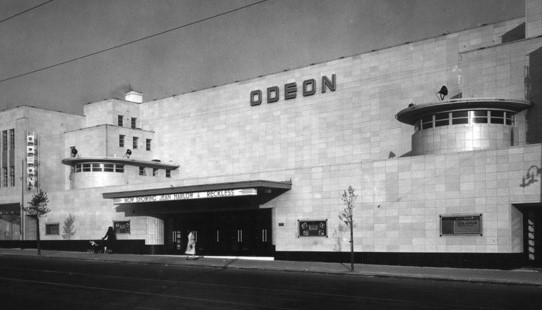 The Beatles continued to perform the song periodically throughout 1963, such as once in Sweden on October 24th, and during their “Autumn Tour,” this beginning on November 1st at the Odeon Cinema in Cheltenham and then continuing on till December 13th in Southampton. This may have only been three weeks after The Beatles’ version was released in Britain, but it was the last time it appeared in the group's set list. American audiences never got to hear it performed live by the group. The Beatles continued to perform the song periodically throughout 1963, such as once in Sweden on October 24th, and during their “Autumn Tour,” this beginning on November 1st at the Odeon Cinema in Cheltenham and then continuing on till December 13th in Southampton. This may have only been three weeks after The Beatles’ version was released in Britain, but it was the last time it appeared in the group's set list. American audiences never got to hear it performed live by the group.
The only time The Beatles ever returned to the song was the couple of rehearsal takes in Apple Studios on January 26th, 1969 during the recording of the “Get Back / Let It Be” project.
Conclusion
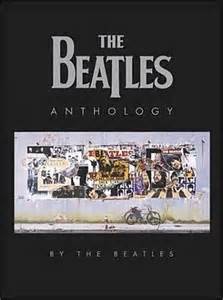 Many sources rightfully claim The Beatles' version of “You Really Got A Hold On Me” as one of the best cover songs of their career. Many descriptive words have been used by these sources to solidify this claim. It can best be summed up by the words of Paul McCartney, as quoted in the "Anthology" book: “A lot of our tracks may not have been ‘cool.’ I think if we'd just been cool, we wouldn't have made it how we did. But that was a great aspect of us. John would do 'A Shot Of Rhythm And Blues' or 'You Really Got A Hold On Me’- you could call that ‘cool.’” Many sources rightfully claim The Beatles' version of “You Really Got A Hold On Me” as one of the best cover songs of their career. Many descriptive words have been used by these sources to solidify this claim. It can best be summed up by the words of Paul McCartney, as quoted in the "Anthology" book: “A lot of our tracks may not have been ‘cool.’ I think if we'd just been cool, we wouldn't have made it how we did. But that was a great aspect of us. John would do 'A Shot Of Rhythm And Blues' or 'You Really Got A Hold On Me’- you could call that ‘cool.’”
Simply put, the song is just plain “cool.”
Song Summary
"You Really Got A Hold On Me”
Written by: William Robinson
- Song Written: October, 1962 (approx.)
- Song Recorded: July 18, 1963
- First US Release Date: April 10, 1964
- US Single Release: n/a
- First US Album Release: Capitol #ST 2080“The Beatles’ Second Album”
- Highest Chart Position: n/a
- British Album Release: Parlophone # PCS 3045 “With The Beatles”
- Length: 2:36
- Key: A major
- Producer: George Martin
- Engineers: Norman Smith, Richard Langham
Instrumentation (most likely):
- John Lennon - Lead Vocals, Rhythm Guitar (1958 Rickenbacker 325)
- George Harrison – Harmony Vocals, Lead Guitar (1962 Gretsch 6122 Country Gentleman)
- Paul McCartney - Harmony Vocals, Bass Guitar (1961 Hofner 500/1)
- Ringo Starr – Drums (1963 Ludwig Downbeat Oyster Black Pearl)
- George Martin - Piano (Baldwin Satin Ebody Grand)
Written and compiled by Dave Rybaczewski
|
IF YOU WOULD LIKE TO MAKE A DONATION TO KEEP THIS WEBSITE UP AND RUNNING, PLEASE CLICK BELOW!
Sign Up Below for our MONTHLY BEATLES TRIVIA QUIZ!
|